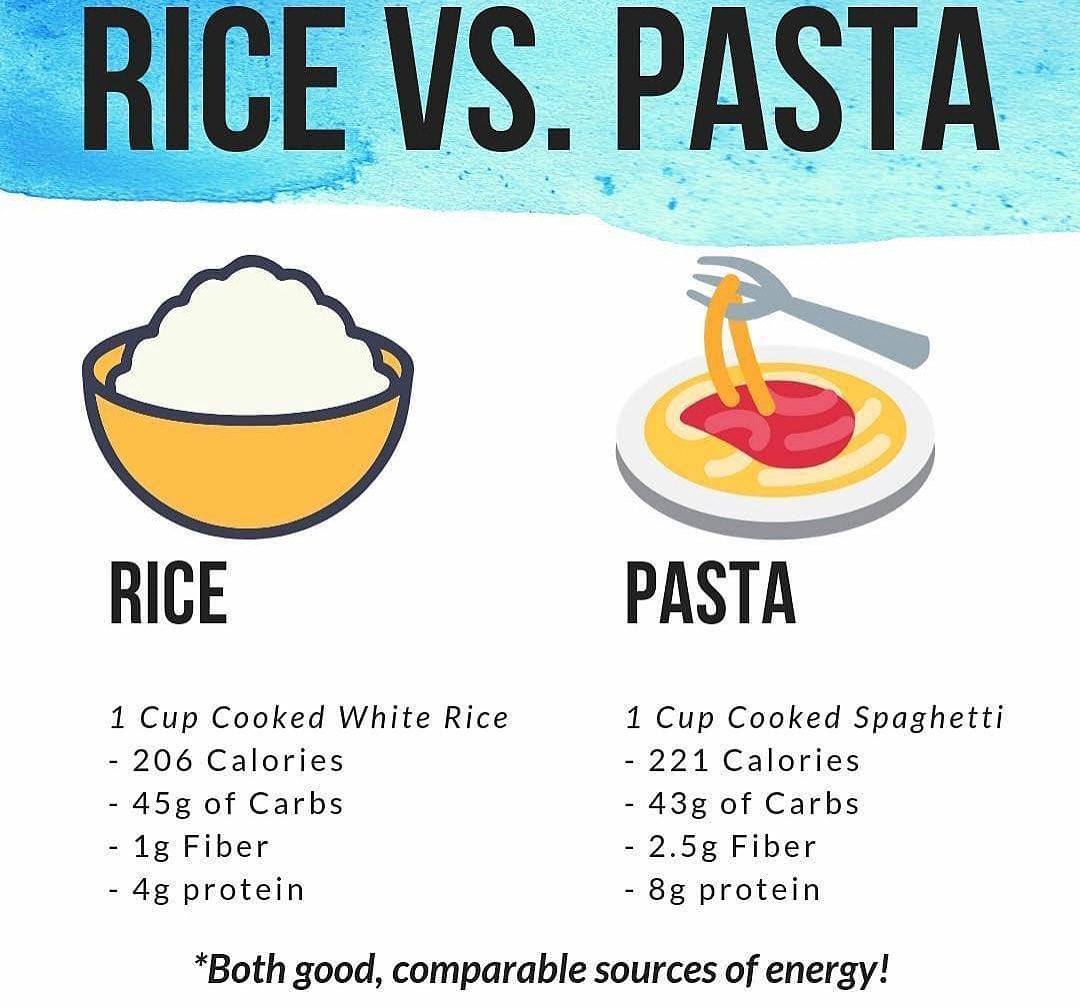
Rice and pasta are staple carbohydrates in many diets worldwide. Understanding their nutritional differences is key for informed food choices. White rice may spike blood sugar, while brown rice offers fiber and nutrients. Pasta, particularly whole wheat, provides fiber and is convenient to cook. Each can be part of a balanced diet with healthy ingredients.
🔍 Seeking a breakthrough in Type 2 Diabetes management?
Discover our expert insights and innovative approaches on ‘How to Cure Diabetes’.
Click to transform your health journey today!
What you\'ll find in this article?
Overview of Rice vs Pasta
When comparing rice and pasta, it's important to consider their nutritional value, carbohydrate content, and impact on blood sugar levels. Each of these factors plays a crucial role in determining which option is best suited for your dietary needs.
Nutritional Value of Rice and Pasta
Both rice and pasta are significant sources of carbohydrates, providing essential energy for the body. White rice, though easily digestible, tends to have a higher glycemic index, potentially leading to spikes in blood sugar levels. On the other hand, brown rice offers more fiber, vitamins, and minerals, and has a lower glycemic index than white rice. Likewise, whole wheat pasta contains more fiber and nutrients compared to white pasta, making it a healthier choice.
Carbohydrate Content in Rice and Pasta
Rice and pasta are known for their high carbohydrate content, which can vary based on the type and processing. Choosing whole grain options, such as brown rice and whole wheat pasta, can provide a more sustained release of energy due to their fiber content.
Impact on Blood Sugar Levels
The impact of rice and pasta on blood sugar levels is influenced by factors such as type, processing, and portion size. Brown rice and whole wheat pasta have a lower glycemic index compared to their refined counterparts, making them better choices for managing blood sugar levels.
Explore our specialized services in diabetes care 🌟.
From personalized diet plans to effective exercise routines, we have what you need to take control of Type 2 Diabetes.
Visit our services page now!







Types of Rice and Pasta
When it comes to choosing between white and brown rice, the main difference lies in their processing. White rice is milled to remove the outer layer, while brown rice retains this nutritious bran layer. Brown rice is packed with fiber, vitamins, and minerals, making it a healthier choice compared to white rice.
White Rice vs Brown Rice
- White rice is more processed and has a higher glycemic index than brown rice.
- Brown rice offers more fiber, vitamins, and minerals.
- White rice is often considered easier to digest, but lacks the nutritional value of brown rice.
When it comes to pasta, the choice between white and whole wheat pasta also impacts nutritional value. Whole wheat pasta is made from whole grain flour, retaining more fiber and nutrients compared to white pasta, which is made from refined flour.
White Pasta vs Whole Wheat Pasta
- Whole wheat pasta is higher in fiber and nutrients than white pasta.
- White pasta has a smoother texture and milder taste compared to whole wheat pasta.
- Whole wheat pasta is a better option for those looking to increase their fiber intake.
Exploring beyond traditional rice and pasta options, there are alternatives like orzo pasta and rice noodles. Orzo is a small rice-shaped pasta often used in Mediterranean dishes, while rice noodles are a staple in Asian cuisine.
Orzo Pasta vs Rice Noodles
- Orzo pasta has a unique shape that adds variety to dishes, while rice noodles are commonly used in stir-fries and soups.
- Rice noodles are gluten-free and suitable for individuals with gluten sensitivities.
- Orzo pasta can be cooked similarly to rice and used in various recipes for a different culinary experience.
Health Benefits of Rice and Pasta
When it comes to rice and pasta, they offer various health benefits due to their nutrient content. Understanding the advantages of including these carbohydrate sources in your diet can help you make informed choices for your overall well-being.
Fiber and Protein Content
- Rice and pasta both contain fiber, which aids in digestion and promotes a healthy gut.
- Whole grain options such as brown rice and whole wheat pasta are particularly rich in fiber.
- Protein is essential for muscle growth and repair, and pasta tends to have a slightly higher protein content compared to rice.
Vitamins and Minerals
- Rice and pasta provide essential vitamins and minerals like B vitamins, iron, and magnesium.
- Whole grain varieties offer a more significant nutrient profile compared to refined options.
- These micronutrients play crucial roles in energy metabolism, immunity, and overall health.
Pros and Cons of Consumption
- Consuming rice and pasta in moderation can contribute to a balanced diet by supplying carbohydrates for energy.
- Whole grain options provide more nutrients and are a healthier choice over refined versions.
- It is essential to be mindful of portion sizes and overall dietary diversity when including rice and pasta in your meals.
Impact on Weight Management
Caloric Comparison
When it comes to weight management, comparing the caloric content of rice and pasta is essential. While both are similar in caloric value, portion control is key to managing weight effectively.
Protein and Fiber Content
Protein and fiber are crucial components in weight loss and management. Pasta tends to have a higher protein content per serving compared to rice, which can help with satiety and muscle retention during weight loss efforts.
Role in a Balanced Diet
- Both rice and pasta can be part of a balanced diet.
- Choosing whole grain options can increase fiber intake and support weight management.
- Incorporating lean proteins and vegetables with rice or pasta dishes can enhance the nutritional value of the meal.
Considerations for Diabetes Management
Effect on Blood Sugar Levels
Rice and pasta can impact blood sugar levels differently. White rice has a higher glycemic index than brown rice, causing quicker spikes in blood sugar. Whole wheat pasta, on the other hand, has a lower glycemic index, leading to a more gradual blood sugar increase.
Suitable Options for Diabetics
- Choosing brown rice over white rice can help stabilize blood sugar levels due to its higher fiber content.
- Opting for whole wheat pasta instead of white pasta can be a better choice for diabetics as it contains more fiber and nutrients.
- Integrating vegetables, lean proteins, and healthy fats into rice and pasta dishes can enhance blood sugar management for individuals with diabetes.
Fitness and Performance
When it comes to fitness and performance, understanding the role of carbohydrates in workouts is crucial for athletes and active individuals. Carbs serve as the body's main source of energy during physical activity, providing fuel for muscles and helping optimize performance.
Role of Carbs in Workouts
- Carbohydrates are essential for fueling exercise
- Carbs are converted into glycogen stores for immediate energy use
- Proper carb intake can enhance endurance and performance
Importance for Athletes
Athletes rely heavily on carbohydrates to support their training and competitive endeavors. Carbs play a key role in sustaining energy levels, promoting recovery, and optimizing overall performance. A balanced carb intake is essential for athletes looking to perform at their best.
Fueling the Body for Exercise
Prioritizing complex carbohydrates before workouts can provide a sustained source of energy for physical activity. Including a mix of carbs, proteins, and fats in pre-exercise meals can help ensure adequate energy levels and support optimal performance. Additionally, staying hydrated and replenishing electrolytes post-exercise is important for recovery and muscle refueling.
Cooking and Preparation
Convenience of Cooking Methods
When it comes to cooking rice and pasta, there are various methods to choose from to suit your preferences and cooking skills. Here are some convenient cooking methods:
- Boiling: The most common method for cooking both rice and pasta. Simply boil water, add the grains, and cook until tender.
- Steaming: Ideal for rice, this method retains nutrients and is simple to prepare using a rice cooker or steamer.
- Sautéing: A flavorful way to prepare pasta dishes, sautéing allows you to combine various ingredients and sauces for a delicious meal.
Recipe Ideas for Rice and Pasta Dishes
There are endless possibilities when it comes to creating rice and pasta dishes. Here are some recipe ideas to inspire your culinary creations:
- Vegetable Stir-Fry with Brown Rice: A nutritious and colorful dish packed with fiber and vitamins.
- Spaghetti Aglio e Olio: A classic Italian pasta dish with garlic, olive oil, and red pepper flakes for a simple yet flavorful meal.
- Coconut Curry Rice Noodles: A fragrant and creamy dish with a hint of spice, perfect for a unique noodle experience.
Incorporating Healthy Ingredients
Enhance the nutritional value of your rice and pasta dishes by incorporating healthy ingredients. Here are some suggestions to boost flavor and nutrients:
- Leafy Greens: Add spinach, kale, or arugula to your dishes for an extra dose of vitamins and antioxidants.
- Lean Proteins: Include grilled chicken, tofu, or beans for a satisfying and protein-rich meal.
- Healthy Fats: Drizzle olive oil or sprinkle nuts and seeds to provide essential fatty acids and add a crunchy texture.
✨ Other articles you might be interested in:



